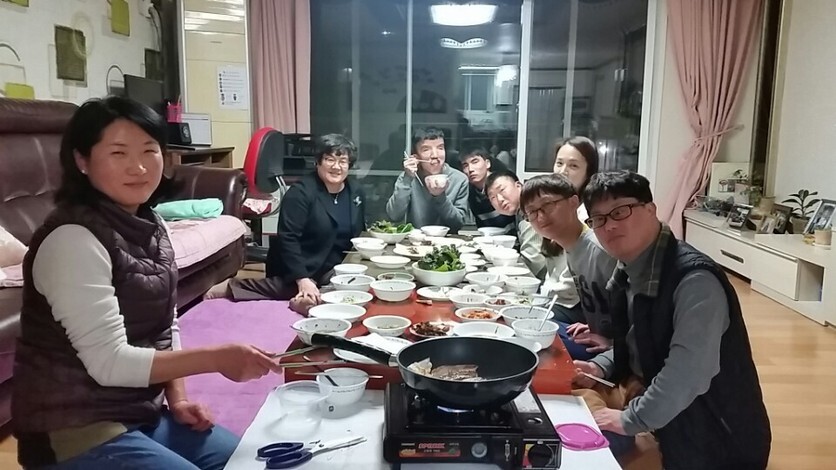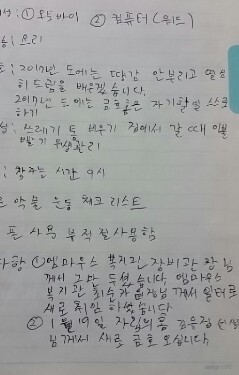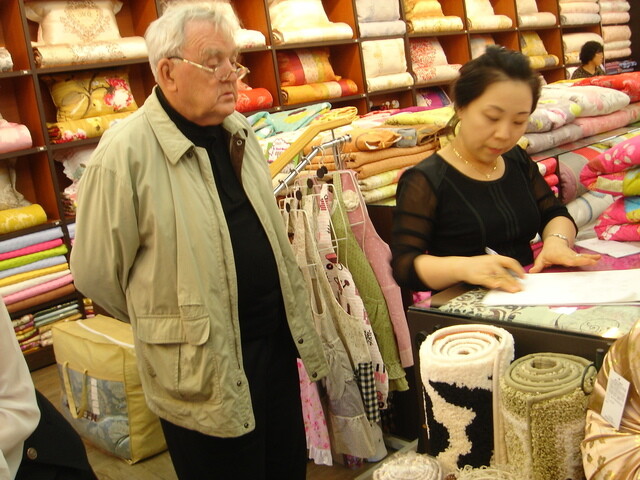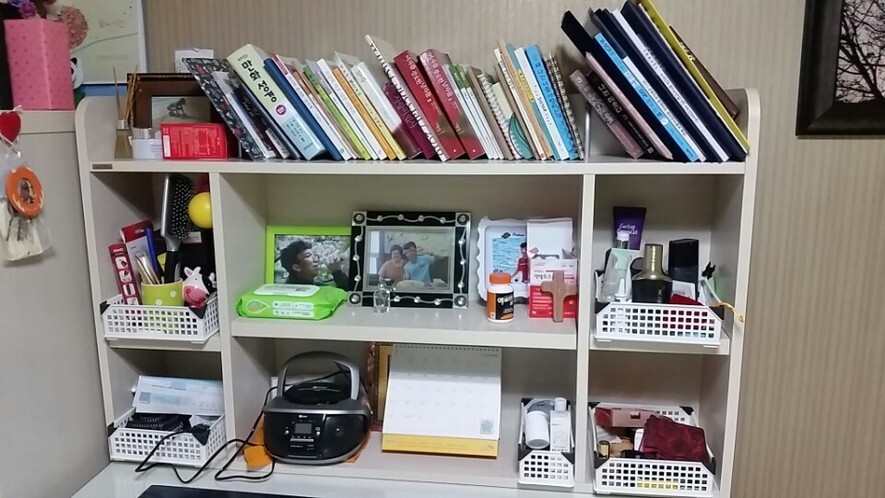hankyoreh
Links to other country sites 다른 나라 사이트 링크
[Reportage] Warmth and autonomy for residents of South Korea’s first group home for the disabled

I pushed the doorbell at the entrance to the unit. It was 4:30 pm on Jan. 24, just before the Lunar New Year holiday, and I was visiting the Emmaus House group home at an apartment in Gwangju. Emmaus House is a small group home for those with disabilities, but there was no sign outside indicating as much. When the door opened, I was greeted by the residents and by two live-in rehabilitation instructors. I was joined by Jeong Jeong-ja, 65, director of Emmaus House, who warmly took the residents by their hands and asked how they were doing.

The interior of the apartment group home was neat and tidy. Four people with level-two intellectual disabilities were living there. Three of them are recipients of government Basic Livelihood Benefits, and the other one is just above the cut-off line for the allowance. Two of them live in the largest room and share the furniture there. The other two residents and the rehabilitation instructors live in the other three rooms. “We’re trying to be considerate of the residents as individuals and to protect their privacy,” Jung said. Since it‘s not easy for people with intellectual disabilities to take care of themselves, the two rehabilitation instructors take turns living at the home and supporting the residents as they would their own family.
In Dec. 2010, the Rainbow Community, a social welfare charity, opened the doors of Emmaus House, a residential facility for the disabled that takes the form of a group home. A group home is a shared living arrangement in which one rehabilitation instructor generally looks after three to five people with disabilities. This system was first introduced to South Korea by the Irish Reverend Noel Patrick O’Neill (who goes by the Korean name Cheon Noel), 85, in Oct. 27, 1981.

Drawing upon such experiences, the Rainbow Community was selected to operate homes for the disabled in Gwangju that take care of groups of people with disabilities. Emmaus House houses a total of 30 individuals in eight apartments with an area of 149 square meters (four individuals at each home, except for two homes with three women each) and has an additional “operations center” where this work is supervised.
This is different from large homes for the disabled, which typically house several dozen people. I was told there has been hardly any pushback to Emmaus House from residents of the apartment in question. The fact that it’s not a large facility but rather a living space for about four people has reduced opposition from the residents, Emmaus House explained.
21 of the people living in Emmaus House have jobs at sites including Emmaus Industries, where five work, and the Emmaus Sheltered Workplace, where four work. One of them also works at a regular company.
“At other factories, people mistreated me and said things I didn’t like to hear. At Emmaus Industries, they give me work I can do. Even when I make mistakes, they respect me instead of insulting me,” said an individual surnamed Park, 38, who lives at Emmaus House.

“I set the temperature for the machine that melts paraffin wax for candles. I also scrape off the candles that fall on the factory floor and smash the defective products,” said an individual surnamed Na, 30.
Emmaus House has 20 employees altogether, including 15 live-in rehabilitation instructors (who are social workers), a manager and an accountant.
On the day I visited, residents and rehabilitation instructors at the group home were getting ready for dinner. “For dinner today we‘re going to have pork belly sent by Reverend Noel. Two of the residents picked up some lettuce from the shop in front of the apartment,” said Jo Hyeon-jin, 48, one of the rehabilitation instructors. There is no cook here.
“We purchase supplies from a supermarket in the area and get the side dishes we want,” said Kim Yu-jeong, 30, a rehabilitation instructor. The residents of the house take turns doing the dishes and the cleaning according to a rotation they have chosen.

Emmaus House respects residents by allowing them to make their own decisions. The residents of Emmaus House visit hair salons and bathhouses in the neighborhood, unlike residents at large homes for the disabled. When the residents don’t feel well, they visit a nearby doctor’s office or clinic.
Once every two weeks, the residents of each home hold a meeting. Topics in the meeting include whether to go on the weekend and what food to cook. Each month, a different resident is responsible for recording what is said during these meetings. On Feb. 2, the four residents got together and shared their hopes for the Lunar New Year, including their resolutions to learn how to play the drums, use the computer and ride a motorcycle.
An individual surnamed Gam, 23, who got a job with Emmaus House that involves cleaning and packing bean sprouts, recently had her hair dyed brown at a beauty parlor. Gam wrote down nine rules for managing her allowance notebook - one of them is “don’t waste my pocket money” - and put this on her desk. Residents are taught to decide for themselves where to spend their allowance and even how much to spend. They also decide where to go for their monthly “theme trip.”
The residents of the group home receive some help from the Community Chest of Korea for their hobbies, including aerobics, photography, bowling, hiking and crafts. Once or twice a month, there is also a “self-reliance day” when the residents get by without the rehabilitation instructors. They also do volunteer work. On Jan. 1, they visited a nursing home in the area, where they sang songs and bowed to the elderly people there. They also make a point of voting in each election.

Emmaus House an alternative welfare model of smaller homes for the disabled
Emmaus House is integrated in the local community and provides a home-like environment. “As long as they can understand what people say, people with disabilities can be integrated into the local community, too. It‘s important to reduce our assistance little by little to help them support themselves,” said Jeong Jeong-ja.
Since 2013, Article 59, Clause 3, of the Act on Welfare of Persons with Disabilities (revised in Mar. 2011) has capped the capacity of new homes for people with disabilities at 30, reflecting a trend toward smaller homes. When the Ministry of Health and Welfare surveyed the 1,484 residence facilities for the disabled around the country as of the end of Dec. 2015, it found that 1,154, or 77.8%, housed 30 or fewer individuals. But there were also 71 large facilities around the country with a capacity of more than 100 people.
One problem is that efforts to reduce the size of the existing large homes for the disabled is leading to the construction of additional homes. The “Y” home for the disabled in Gwangju is building a new home with 1.2 billion won (US$1.05 million) that the government and the city provided for it to reduce its capacity from 43 residents to 30 or fewer. The “P” home for the disabled, which houses 60 individuals, is also adding another building with 1.2 billion won in funding allocated for it to reduce its current number of residents to below 30.
“Government policy should not be moving in the direction of building more residence facilities for the disabled to move them somewhere far away from downtown and keep them separate,” said a source at a group for people with disabilities.
Emmaus House is thought to provide an alternative welfare model for scaling down homes for the disabled. “With the exception of severely disabled individuals who need protection, an interior makeover is all you need to turn an apartment into a group home. Rather than investing money in building new homes for the disabled, it would be better to increase the number of group homes like the Emmaus House,” said Hwang Hyeon-cheol, leader of the disabled support team for the Gwangju Welfare Center.
“We don’t have any funds that are dedicated to decreasing the size of homes for the disabled, and we only provide support for building new facilities. We’re conducting an internal review of the idea of introducing the Emmaus House model,” said an official with the Ministry of Health and Welfare.
By Jung Dae-ha, Gwangju correspondent
Please direct questions or comments to [english@hani.co.kr]

Editorial・opinion
![[Column] Has Korea, too, crossed the Rubicon on China? [Column] Has Korea, too, crossed the Rubicon on China?](https://flexible.img.hani.co.kr/flexible/normal/500/300/imgdb/original/2024/0419/9317135153409185.jpg) [Column] Has Korea, too, crossed the Rubicon on China?
[Column] Has Korea, too, crossed the Rubicon on China?![[Correspondent’s column] In Japan’s alliance with US, echoes of its past alliances with UK [Correspondent’s column] In Japan’s alliance with US, echoes of its past alliances with UK](https://flexible.img.hani.co.kr/flexible/normal/500/300/imgdb/original/2024/0419/2317135166563519.jpg) [Correspondent’s column] In Japan’s alliance with US, echoes of its past alliances with UK
[Correspondent’s column] In Japan’s alliance with US, echoes of its past alliances with UK- [Editorial] Does Yoon think the Korean public is wrong?
- [Editorial] As it bolsters its alliance with US, Japan must be accountable for past
- [Guest essay] Amending the Constitution is Yoon’s key to leaving office in public’s good graces
- [Editorial] 10 years on, lessons of Sewol tragedy must never be forgotten
- [Column] A death blow to Korea’s prosecutor politics
- [Correspondent’s column] The US and the end of Japanese pacifism
- [Guest essay] How Korea turned its trainee doctors into monsters
- [Guest essay] As someone who helped forge Seoul-Moscow ties, their status today troubles me
Most viewed articles
- 1[Column] The clock is ticking for Korea’s first lady
- 2Samsung barricades office as unionized workers strike for better conditions
- 3After 2 months of delayed, denied medical care, Koreans worry worst may be yet to come
- 4[Correspondent’s column] In Japan’s alliance with US, echoes of its past alliances with UK
- 5[Column] Has Korea, too, crossed the Rubicon on China?
- 6Hong Se-hwa, voice for tolerance whose memoir of exile touched a chord, dies at 76
- 7[Photo] Smile ambassador, you’re on camera
- 8All eyes on Xiaomi after it pulls off EV that Apple couldn’t
- 9[Guest essay] How Korea turned its trainee doctors into monsters
- 10US overtakes China as Korea’s top export market, prompting trade sanction jitters